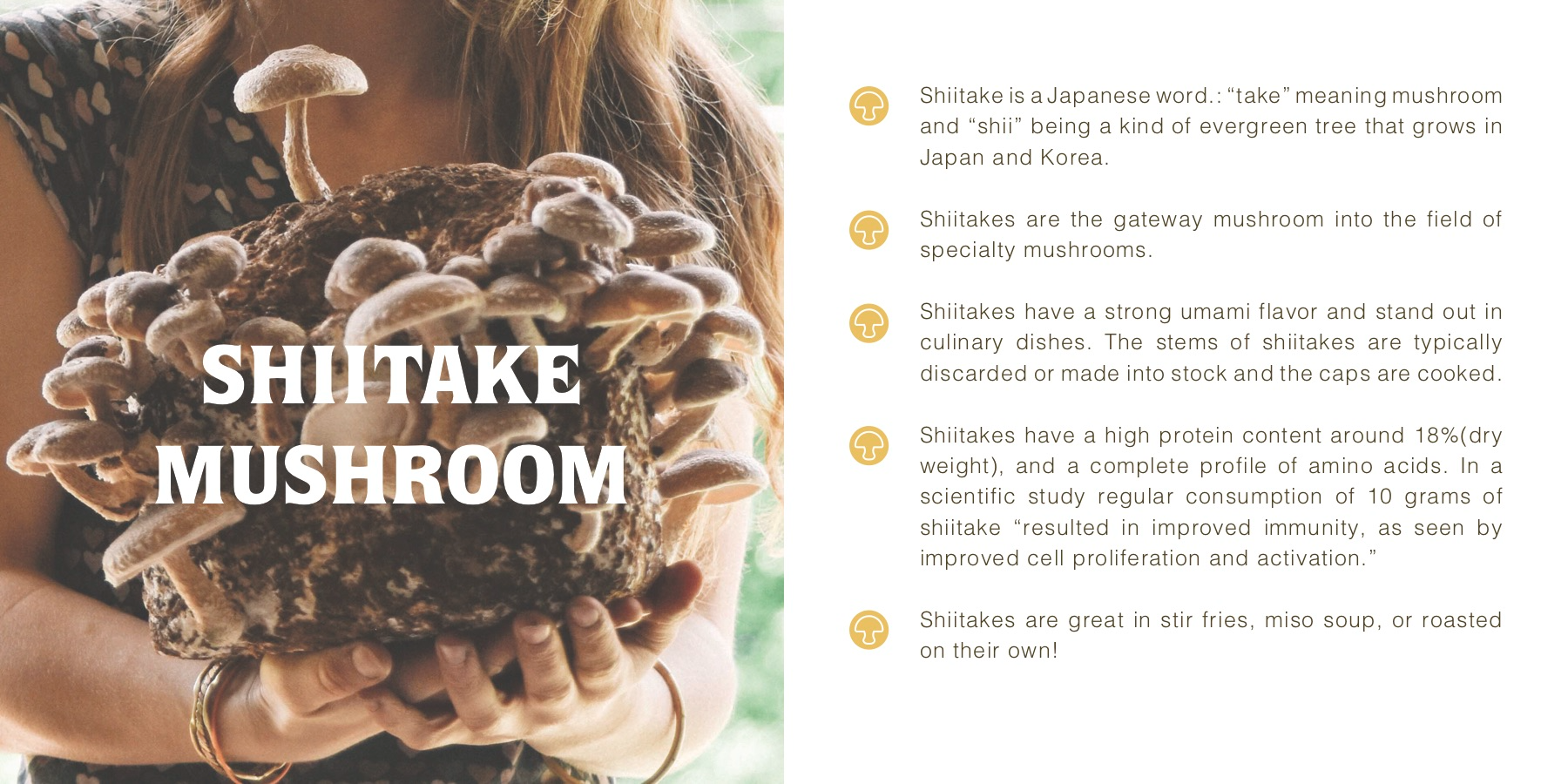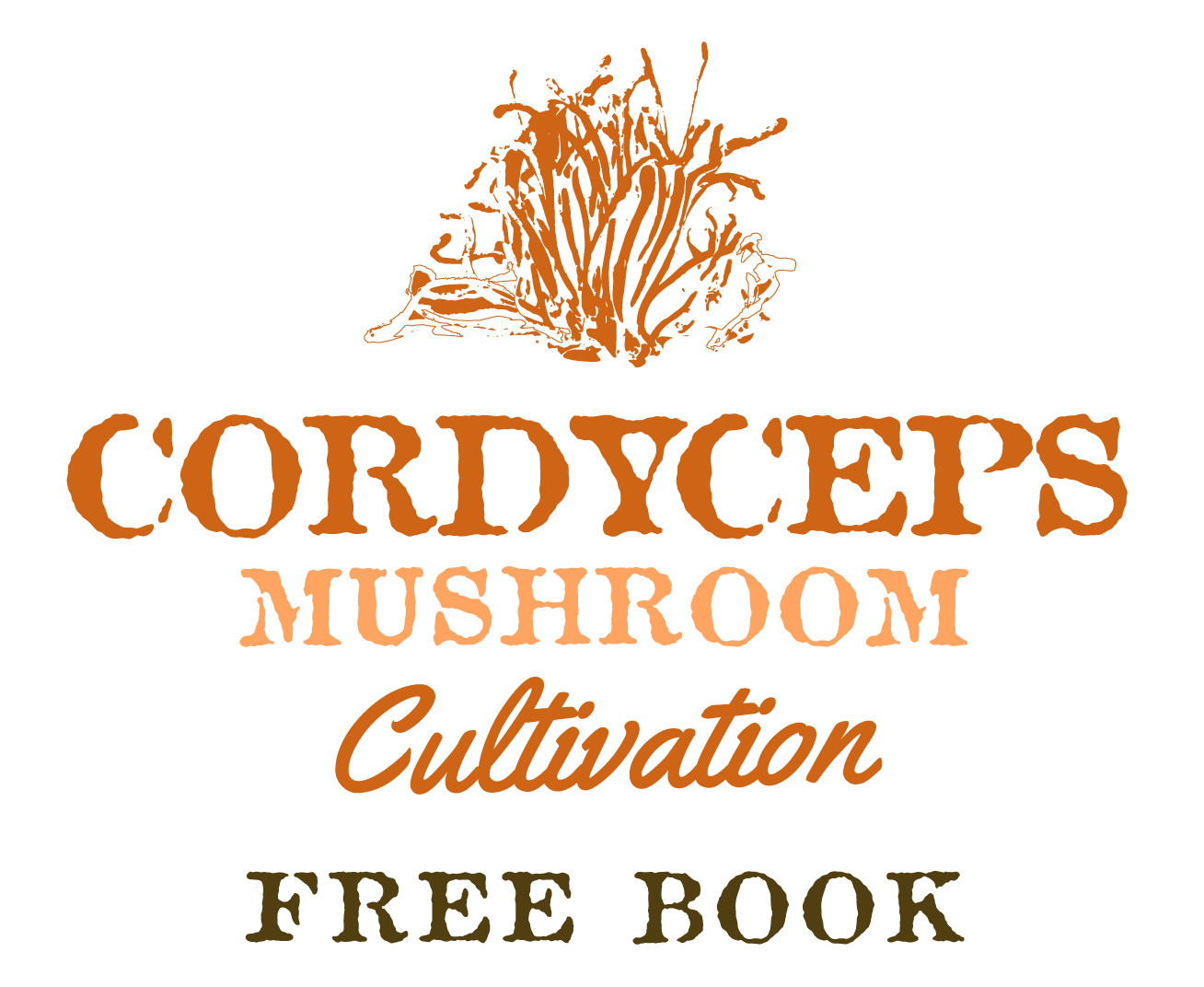How To Grow Mushrooms
Below are 6 guidebooks on how to grow mushrooms, specialty mushrooms and how to use them. All of them are available to download for free. Join the mushroom alliance and GROW MORE MUSHROOMS!
- Oyster Mushroom Cultivation
- Shiitake Mushroom Cultivation
- Cordyceps Mushroom Cultivation
- Beyond The Button
- Specialty Mushroom Cultivation
- Commercial Mushroom Cultivation




This series of booklets on how to grow mushrooms is intended to support any farmer, student, educator, organizer, entrepreneur or homesteader who is interested in taking specialty mushroom cultivation to the community level. This first booklet provides an introduction to mushrooms, mycology, and the specialty mushroom industry. We also discuss the ways mushrooms offer solutions to a wide range of community challenges in both rural and urban locations. Book Two on growing mushrooms provides a detailed overview of common cultivation methods, and the third book discusses the parameters for fruiting, harvest, and sales. While the overall intention of these guides is to support cultivators to get started or improve a commercial operation, the information and methods offered here also apply to anyone interested in mushroom production at many other scales.
Mushrooms have so much to teach us beyond reusing waste streams and producing high-quality food. They are also teachers of the connection all beings share, the importance of community, and the truth that nothing goes to waste. Yes, the specialty mushroom industry is rapidly growing, and there are huge business opportunities in working with fungi. This should not supersede the deeper truths fungi have to teach. Hopefully as this industry expands it can do so with the values of community and connection.
The best teachers for growing and working with fungi are the mushrooms themselves. A lot of learning how to cultivate mushrooms is trying to grow them, watching what happens, and then adjusting accordingly. As with any farming venture, it is key to accept that you will have both successes and failures. Mushroom cultivation is a constant dance of observation and reaction, of science and art. Hopefully these booklets give you a beat to start that dance, to explore with curiosity who fungi are and how to ally with them in your life

This is the second booklet in a series designed to introduce growers to the wide world of specialty mushroom cultivation. While book one focused on an overview of what mushrooms are and the outlook of the industry as a whole, this booklet outlines the considerations to successfully bring mushrooms through the production cycle in a commercial context. Book three focuses on the construction of sound growing spaces, considerations for marketing and sales, as well as grower profiles. If you have not read book one yet we recommend starting there!
There are many options when thinking about growing mushrooms. Below are 3 guidebooks outlining how to grow mushrooms.
If you want to learn how to grow mushrooms commercially check out our online course on starting a mushroom farm.
- Shiitake – on logs and sawdust blocks
- Oysters on straw
- Cordyceps on grain
In general there are seven stages of cultivation that you follow regardless of what method you decide on how to grow mushrooms. These are modified from Tradd Cotter’s book on organic mushroom farming.
How to grow mushrooms, the seven stages of cultivation:
- strain selection
- media preparation
- inoculation
- spawn run
- pinning
- fruiting
- rest
How to grow mushrooms: Excerpt from the oyster guidebook
GROWING OYSTER MUSHROOMS ON STRAW
Oyster mushroom cultivation on straw can be broken into four parts, treatment of the straw, inoculation, incubation, and fruiting. Each step is crucial to the next and affects the overall yield. The step-by-step process of growing oyster mushrooms on straw is outlined below.
1) CHOP STRAW
By chopping the straw the cell walls of the straw are broken making it easier for the oyster mycelium to access the nutrients in the straw. Chopping the straw makes the particle size smaller allowing a more compact substrate. A relatively small gap of 1-2 inches between pieces of straw is like the Grand Canyon for mycelium to grow over. It takes wasted energy and time for the mycelium to try and grow over these sorts of gaps. By chopping the straw and firmly packing the bags air pockets can be minimized and yield increased.
2) TREAT STRAW
Using the method which best meets the needs of the grower the straw is prepared for the oyster mycelium. By treating the straw microorganisms are killed and competition for the available nutrients is limited.
3) INOCULATE
Add spawn into the treated straw. This is the material used to introduce the mushroom mycelium to the new substrate.
4) INCUBATE
Incubation should ideally occur at 75 degrees for about 3 weeks depending on the inoculation rate. Bags should be placed with at least a palm distance between them to limit overheating.
5) FRUIT
There are 4 parameters to be aware of when fruiting. They are light, humidity, temperature, and CO2 level. For most oyster mushrooms a well-lit room at 85-90% humidity, 65 degrees, and CO2 below 800 PPM is ideal.
6) HARVEST
Harvesting typically occurs about 5-10 days after the substrate is moved into fruiting conditions. Mushrooms should be harvested before the caps completely flatten out.


Grow Oyster Mushrooms at Home!
Download this Free 36 page guide to learn how to grow oyster mushrooms at home or on the commercial scale. This book covers the step by step process of growing oyster mushrooms on straw. It also summarizes a study comparing four different treatment methods to prepare straw for oyster mushroom cultivation. This book is for anyone looking for a fast method of mushroom cultivation that can be done year round with minimal initial inputs.
How to grow mushrooms: GROWING SHIITAKE ON SUPPLEMENTED SAWDUST
The process of indoor shiitake cultivation on supplemented sawdust follows the steps below. Fourteen steps may seem like a lot, but when this process is looked at in depth, fourteen is a simplification of all the steps along the way. When really zoomed in, this process has around 65 unique steps to turn raw substrate into raw cash all while using vegan methods. Our objective in this process is to efficiently transform substrate into fully colonized mycelial blocks that then produce copious amounts of mushrooms. To do this, careful analysis of each step is needed, and continued trial and error on different steps is encouraged and fun.
1) Strain and formula selection. 2) Sourcing substrate. 3) Substrate storage. 4) Mixing substrate. 5) Bagging. 6) Steaming. 7) Cooling. 8) Inoculation. 9) Shaking. 10) Incubation. 11) Browning. 12) Fruiting Initiation. 13) Fruiting. 14) Harvest.
1) Strain and Formula Selection. Choosing the best strain and substrate formula is a critical first step to shiitake cultivation. Based on Fungi Ally trials, either 3790 or 3782 should be used for indoor cultivation on supplemented sawdust. High yielding fruiting can be achieved with the basic formula put forward in Paul Stamets’ Growing Gourmet and Medicinal Mushrooms. This is a mixture of hardwood sawdust, wheat bran, and gypsum. By dry weight, use 79% sawdust, 20% wheat bran, and 1% gypsum. At Fungi Ally, this equated to seven 18-gallon totes of sawdust, two and a half 25-lb bags of wheat bran, and 1 gallon of gypsum. Weights were calculated once and then placed into volume which could be easily repeated without constantly weighing. Other farms use home-built mixers which weigh out both substrate and water for each bag through a process known as dry bagging.
How to grow Mushrooms: Excerpt from cordyceps cultivation guide
First off if you haven’t watched th e BBC video on cordyceps, go check that out now! Cordyceps is a genus of mushrooms located in the ascomycota phylum. The latin name breaks down into “cord” and “ceps,” meaning “club” and “head.” Presumably, a club fungus fruiting out of the head of an insect. The life cycle is radically different than most cultivated mushrooms, which are located in the phylum basidiomycota. Cordyceps have an asexual reproduction stage, which allows them to skip making a fruiting body to produce spores. This is one reason
why cultivation of cordyceps can be difficult; not all wild isolates will create fruiting bodies. Strain selection is vital in proper cultivation of cordyceps. Cordyceps as a common name typically refers to two species of mushroom, but scientifically it refers to a genus with over 400 species of mushrooms in it. This is the challenge with using common names; most of the time they apply to many different mushrooms. The two primary ones that are typically being referred to when people say “cordyceps” is Cordyceps sinensis (renamed in 2007 to be Ophiocordyceps sinensis) and Cordyceps militaris.









